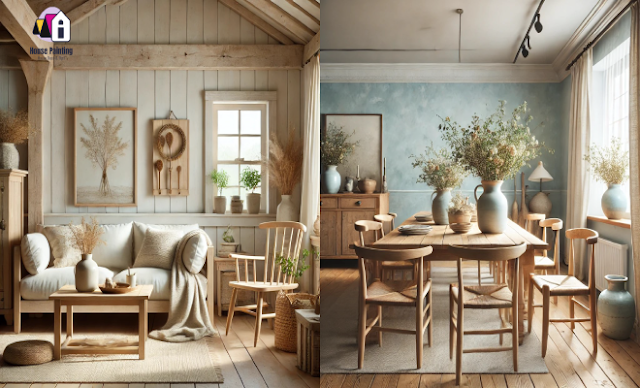Milk paint is a versatile, eco-friendly option that has been cherished for centuries, offering a natural and non-toxic way to breathe life into furniture and walls. Whether you're aiming for a vintage, rustic, or contemporary look, milk paint delivers a unique, matte finish that makes any piece stand out.
What Is Milk Paint?
Milk paint is made from simple, natural ingredients like milk protein (casein), lime, and pigments. Unlike synthetic paints, it contains no harmful chemicals, making it an excellent choice for environmentally-conscious homeowners and families.
Why Choose Milk Paint?
- Eco-Friendly and Non-Toxic: Perfect for indoor use, especially in spaces frequented by children and pets, milk paint is free of volatile organic compounds (VOCs).
- Versatility in Finishes: Whether you want a smooth, solid color or a distressed, chippy effect, milk paint adapts to your vision. It’s ideal for creating a vintage or rustic aesthetic.
- Adheres to Various Surfaces: From wood and plaster to metal and concrete, milk paint can be used on numerous surfaces with minimal preparation.
- Customizable Colors: With a wide range of natural pigments, you can mix and match to create your desired shade.
Popular Uses of Milk Paint
- Furniture Makeovers: Transform old furniture with milk paint to give it a charming, rustic look. Add a distressed finish for an authentic vintage vibe.
- Wall Accents: Use milk paint on walls for a soft, matte appearance that exudes warmth and character.
- DIY Projects: Create unique home decor items like picture frames, shelves, or planters with milk paint’s distinctive finish.
How to Use Milk Paint
- Preparation:
- Clean the surface thoroughly.
- Sand if needed, especially for smooth, non-porous surfaces.
- Mix milk paint powder with water according to the manufacturer’s instructions.
Application:
- Apply with a brush or sprayer for a smooth finish.
- For a distressed look, sand selectively after the paint dries.
- Sealing:
- Protect the painted surface with a finishing product like wax or oil to enhance durability.
Milk Paint vs. Chalk Paint
While both milk paint and chalk paint are popular for furniture refinishing, they have distinct differences:
- Milk Paint: Offers a natural, eco-friendly option with more variability in finishes.
- Chalk Paint: Provides a thicker, more uniform texture but is less environmentally friendly.
Tips for Success
- Experiment with mixing pigments to create custom colors.
- Test on a small area before applying to ensure the desired finish.
- Seal the paint to protect against wear and tear, especially on high-use furniture.
Conclusion
Milk paint is more than just a painting medium; it’s a sustainable way to add beauty and personality to your home. Whether you’re restoring an antique piece or adding character to modern decor, milk paint’s versatility and eco-friendly nature make it a timeless choice. Embrace this natural alternative and transform your spaces with charm and creativity!

